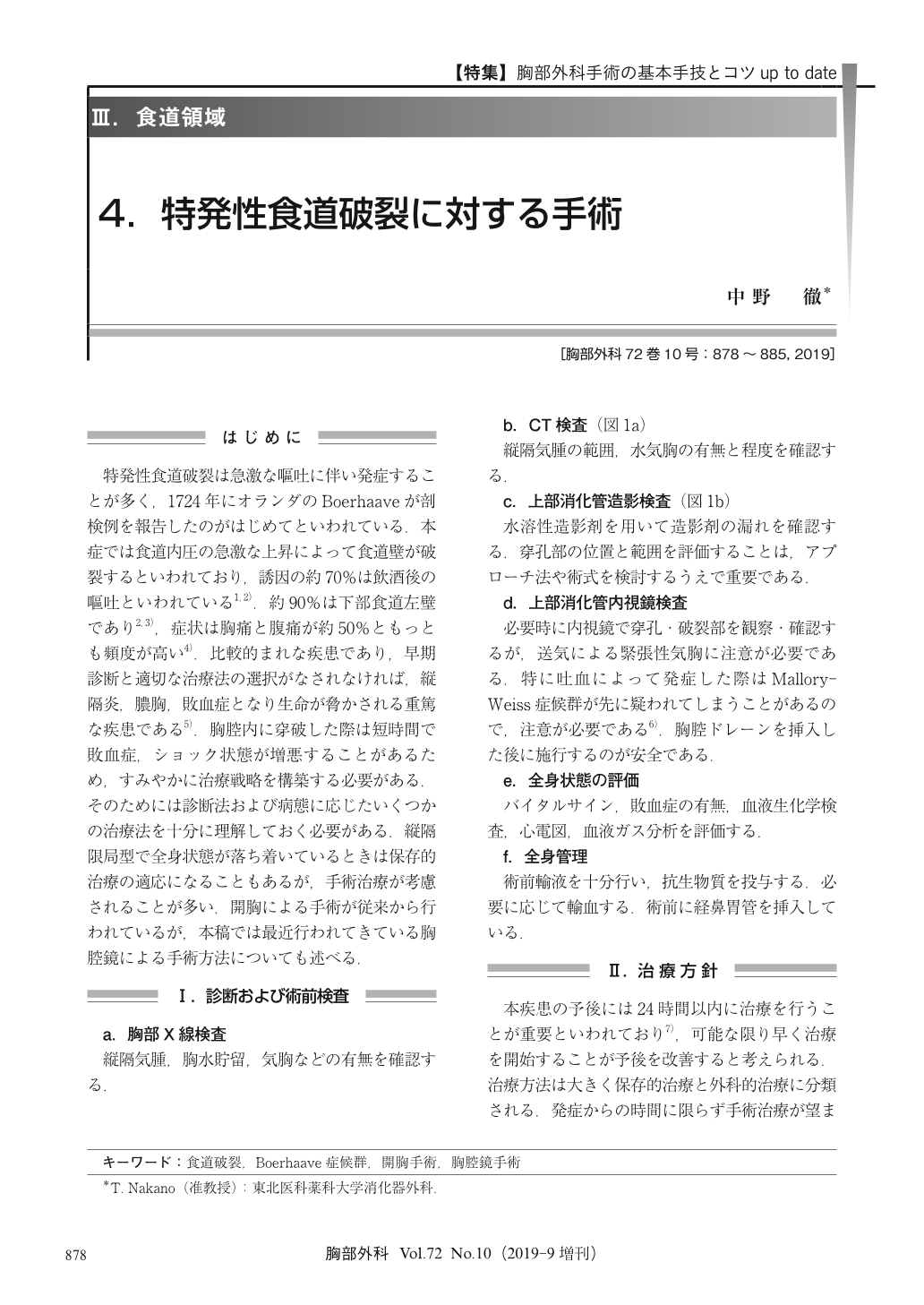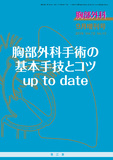Japanese
English
- 有料閲覧
- Abstract 文献概要
- 1ページ目 Look Inside
- 参考文献 Reference
- サイト内被引用 Cited by
特発性食道破裂は急激な嘔吐に伴い発症することが多く,1724年にオランダのBoerhaaveが剖検例を報告したのがはじめてといわれている.本症では食道内圧の急激な上昇によって食道壁が破裂するといわれており,誘因の約70%は飲酒後の嘔吐といわれている1,2).約90%は下部食道左壁であり2,3),症状は胸痛と腹痛が約50%ともっとも頻度が高い4).比較的まれな疾患であり,早期診断と適切な治療法の選択がなされなければ,縦隔炎,膿胸,敗血症となり生命が脅かされる重篤な疾患である5).胸腔内に穿破した際は短時間で敗血症,ショック状態が増悪することがあるため,すみやかに治療戦略を構築する必要がある.そのためには診断法および病態に応じたいくつかの治療法を十分に理解しておく必要がある.縦隔限局型で全身状態が落ち着いているときは保存的治療の適応になることもあるが,手術治療が考慮されることが多い.開胸による手術が従来から行われているが,本稿では最近行われてきている胸腔鏡による手術方法についても述べる.
Spontaneous esophageal rupture was first reported by Boerhaave in 1724 and typically occurs in conjunction with vomiting, retching, or swallowing a large food bolus. This condition is potentially life threatening and causes severe mediastinitis, empyema, and sepsis, unless appropriate and early treatment is initiated. Conventional surgical repair is recommended within 24 hours of initial onset. However, some reports recommend surgery regardless of the time interval since onset. Various surgical procedures, conservative to esophagectomy, have been utilized in clinical practice. These methods include open thoracotomy, thoracoscopic surgery, or the addition of laparotomy. In this chapter the basic method of chest drainage, esophageal repair and reinforcement of suture line by open thoracotomy or thoracoscopic surgery. Surgical results for the treatment of this condition with thoracoscopic surgery are similar to those with conventional thoracotomy. Any procedures should be considered as suitable when selecting the approach used to treat Boerhaave’s syndrome with regard to patient condition, status of the esophageal tear, and the surgeon’s skills. In any surgical methods, it is important to assess the area of esophageal tear, to suture the esophageal wall appropriately, and to have enough drainage and place chest tubes in the proper position.

© Nankodo Co., Ltd., 2019


